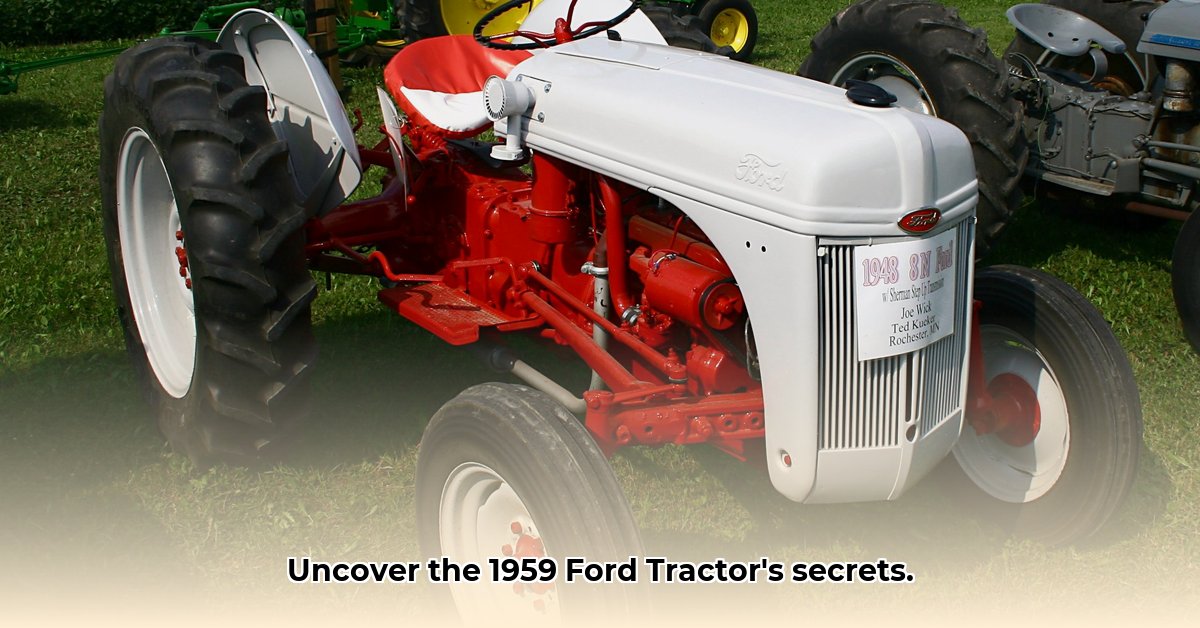
The 1959 Ford 641 Workmaster: A Deep Dive
The 1959 Ford 641 Workmaster, often referred to as the "641," wasn't just another farm machine; it marked a significant step forward in agricultural technology. This comprehensive guide explores its history, technical specifications, operation, maintenance, and restoration, catering to both casual enthusiasts and dedicated collectors. For troubleshooting help, check out this helpful resource on Ford tractor problems.
Technical Specifications and Features: Understanding the 641
The 641’s powertrain varied depending on the engine option chosen: gasoline, diesel, or liquid propane gas (LPG). This resulted in discrepancies in reported horsepower across different sources. Testing methodologies in the late 1950s weren't standardized, leading to variations in quoted PTO (power take-off), drawbar (pulling power), and belt horsepower. However, the 641 was a robust machine capable of handling varied farm tasks.
| Specification | Approximate Value (Varied by Engine Type) | Notes |
|---|---|---|
| Gross Horsepower | 40-48 hp | Varied significantly based on the fuel type and engine design. |
| PTO Horsepower | 30-35 hp | Power available at the PTO shaft, driving other implements. |
| Drawbar Horsepower | 25-30 hp | Pulling power, reflecting the tractor's ability to haul implements or equipment. |
| Weight | Approximately 5000 lbs | Varied slightly based on configuration. |
| Hydraulic System | 4 GPM (gallons per minute) | Relatively low compared to modern tractors, reflecting the technology of the era. |
| Transmission | Manual, Multi-speed | Farmers shifted gears manually, which afforded greater control and flexibility in varied farm conditions. |
Historical Context: The 641 in its Era
The 641 emerged during a period of rapid mechanization in agriculture. It represented a significant leap forward in power and capabilities for Ford, yet simultaneously showcased the mechanical limitations of its time. The availability of gasoline, diesel, and LPG engines gave farmers choices based on their needs and regional fuel availability. This adaptability reflected Ford's understanding of the diverse operating environments faced by their customers.
Operation and Maintenance: Keeping Your 641 Running
Operating a vintage tractor like the 641 requires a cautious and informed approach. Before starting any work, always prioritize safety.
Pre-Operation Checklist:
- Safety Inspection: Thoroughly inspect the tractor, checking fluids, tires, and safety mechanisms. (Never operate a tractor without a completed safety check.)
- Familiarization: Spend time understanding the controls. Begin slowly and progress to more complex tasks. Having an experienced individual guide you is beneficial.
- Regular Maintenance: Consistent oil changes, filter replacements, and fluid level checks are crucial for preventing costly repairs.
- Basic Troubleshooting: Familiarize yourself with common issues and their solutions. (Addressing minor problems promptly prevents major breakdowns.)
A 1959 Ford 641 service manual is invaluable; acquiring a copy is highly recommended. Have you considered documenting your restoration/maintenance journey for others?
Collectors' Information and Restoration: Bringing a 641 Back to Life
Restoring a 641 is a substantial undertaking. Sourcing parts can be challenging. Online forums, specialized parts suppliers, and classic tractor parts dealers are key resources. Common restoration challenges include engine issues, hydraulic system repairs, and electrical component replacements. Thorough documentation aids in the restoration process.
Conclusion: The Enduring Appeal of the Ford 641
The 1959 Ford 641 Workmaster represents a significant landmark in agricultural history. Its robust design, adaptability, and the choice of different fuel options speak volumes about its era. The tractor's continued popularity among collectors reflects its robust build and historical significance. Its enduring legacy continues to captivate enthusiasts and serves as a testament to the innovations of a bygone era. The 641 is more than just a machine; it's a portal to a time when agricultural machinery was built to withstand the tests of time. Wouldn't you agree?